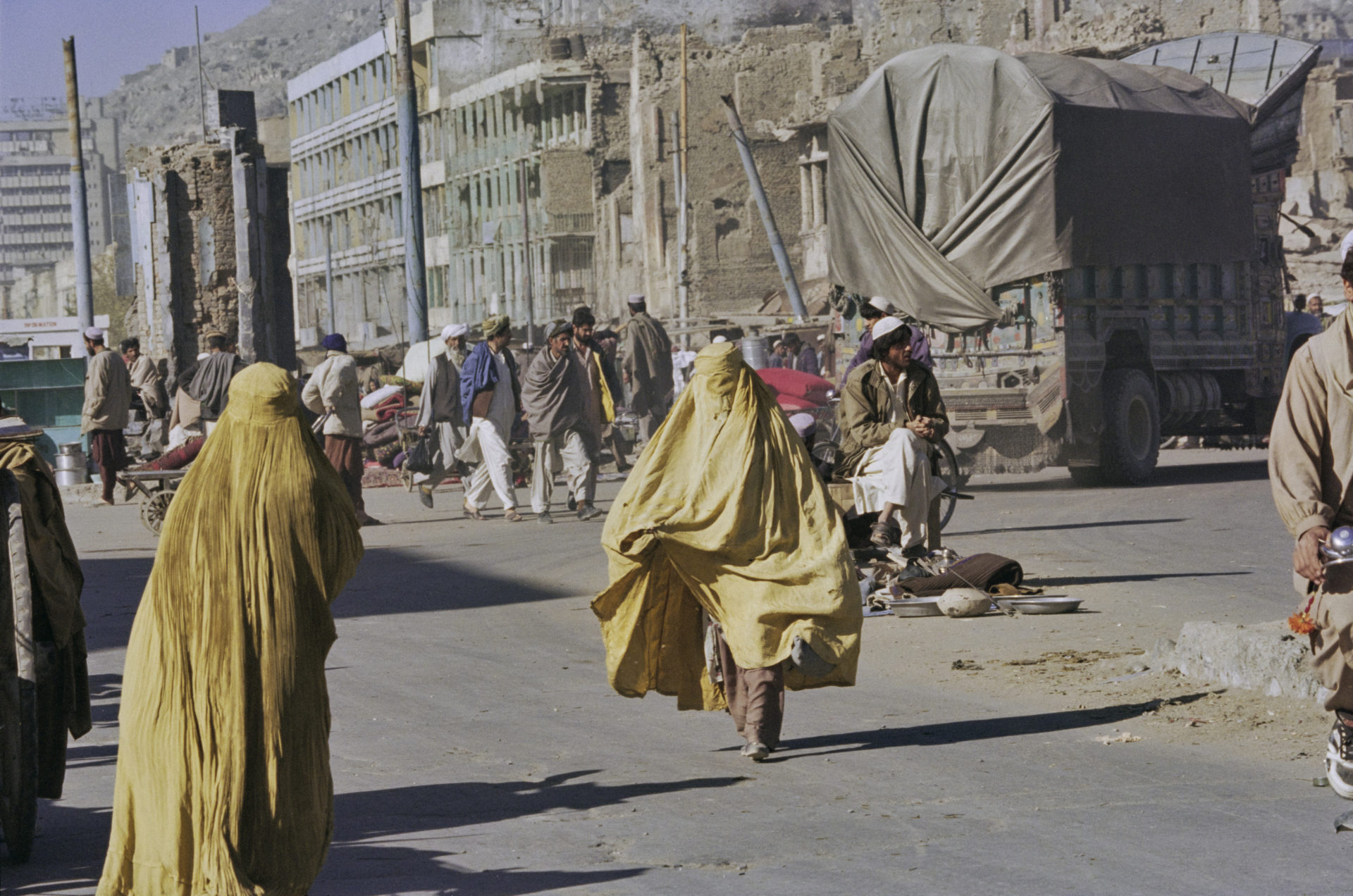Afghanistan: A Story of Power Struggles and Fallen Empires
Get the background on the war-torn country dominating the news.
By: GenZ Staff | August 18, 2021 | 778 Words
After 20 years at war, the United States has pulled out of Afghanistan – but what exactly is the background of this Central Asian country?
Afghanistan is a nation, but its people are made up of many tribes. Warlords and tribal leaders rule different regions – though the groups were officially united in 1747. The largest ethnic group is the Pashtuns, which make up nearly half the population, but there are also Tajiks, Hazaras, Uzbeks, and others.
Afghanistan is a landlocked country, bordered by Iran to the west and Pakistan to the east. The terrain is harsh with a mountainous and desert landscape. Despite the arid summers, the mountains are often covered in snow and the winters can be extremely cold. Many of the people live and farm in fertile valleys and river areas.
 Afghanistan has endured a war-torn history, including invasions by many countries and other groups. Yet, it has gained a reputation for being difficult to rule, with many failing to “tame” it. This has given Afghanistan the nickname “graveyard of empires.”
Afghanistan has endured a war-torn history, including invasions by many countries and other groups. Yet, it has gained a reputation for being difficult to rule, with many failing to “tame” it. This has given Afghanistan the nickname “graveyard of empires.”
Early and Middle Eras
In ancient times, the region became part of various empires, including a brief occupation by Alexander the Great, who arrived in 330 BC.
An important section of the ancient Silk Road trading routes, the region was influenced by Buddhist and Hindu cultures. From 642 AD, Islamic conquest brought the Muslim religion, with armies working to conquer the area over hundreds of years. In 1219 AD, Mongol Emperor Genghis Khan also invaded the region.
After Khan’s empire collapsed, Afghan tribes and other invaders vied for power, with Persia (Iran) and India taking over areas.

From Sketches in Afghanistan by James Atkinson. (London, 1842). (Photo by Ann Ronan Pictures/Print Collector/Getty Images)
Enter the British
Many rulers rose and fell over the centuries in Afghanistan. Then, in 1838, the British arrived in the capital city, Kabul. At first, their takeover resulted in failure, but British soldiers marched back in and recaptured the city. This was the beginning of what is known as The Great Game, a long conflict between the British Empire and the Russian Empire over control in the region.
Three Anglo-Afghan Wars were fought during the 19th and 20th centuries, but Britain eventually lost and retreated in 1919. Afghanistan declared independence under King Amanullah Khan – but that wasn’t the end of the country’s troubles. Leaders kept fighting about who should reign over the nation.
A Cold War Battleground
In 1975, a communist group called the People’s Democratic Party of Afghanistan (PDPA) seized power. Not everyone in Afghanistan was happy, and a group called the mujahideen mounted a resistance. Soon, a civil war was underway.
Two superpowers of the 20th century got involved – the Soviet Union and the United States. These two powerful countries were struggling for world dominance – and Afghanistan became a battleground in their dispute. The Soviet Union was communist, so it supported the PDPA. On the other side, the U.S. supported the mujahideen rebels.
The Soviets invaded Afghanistan in 1979 to fight the rebels – and stayed there until 1989. The Soviet Union collapsed in 1991, and a year later, the PDPA fell. It was the end of the regime, but the conflict had turned Afghanistan into a nest of terrorism and violent extremist groups.

Afghanistan under the rule of the Taliban, an Islamic fundamentalist group (Photo by David Turnley/Corbis/VCG via Getty Images)
Modern Day
With the PDPA gone, different factions competed for power. A group called the Taliban emerged in 1994 and took over parts of the country. The group was an Islamic militia with support from Pakistan. They imposed strict Islamic law and treated the population harshly and brutally – burning land and denying food supplies to the people. Meanwhile, other extremist Islamist groups were active in the country, too – such as al Qaeda.
A few years later, the United States invaded Afghanistan. The soldiers who had once worked with the U.S. had turned against their one-time allies. One mujahideen fighter in the 1970s was Osama bin Laden – he formed the terrorist group al Qaeda and was named as a mastermind in the 9/11 attack in New York City in 2001. The U.S. soon invaded Afghanistan, looking for bin Laden. The Taliban were forced to retreat, and a new Afghani government was set up with a president and a constitution. American soldiers kept fighting off the Taliban and supporting the new Afghan government. The country continued to be very unstable, though.

After 20 years at war, the United States military finally left Afghanistan in 2021 – but the government they helped to build immediately collapsed, and the Taliban took over the country once again.
















